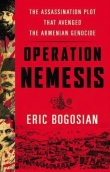
Текст книги "Eric (СИ)"
Автор книги: Марина Шпак
Жанр:
Языкознание
сообщить о нарушении
Текущая страница: 14 (всего у книги 21 страниц)
The time of operational tests has come. For this purpose, five crossbows and 25 bolts to them were identified, as well as a group consisting of experienced shooters who passed through the battle of Edessa and the shootings that preceded it. Opposite to five targets, made in the form of silhouettes of human figures, marks were made for every ten steps up to one hundred and fifty. Then they began to fire. Each shooter produced five shots in each of the positions. At the same time, the percentage of the hit, the scatter, and the necessary elevation above the target were recorded. It turned out so that from a distance of up to fifty steps the bolt got into the growth figure with 100% accuracy. When the distance was increased to eighty steps, the accuracy decreased. Now every fifth bolt, on average, went past the target. From a distance of one hundred paces, every second bolt beat "into milk. " With a further increase in the distance, the accuracy fell to such an extent that shooting became possible only in large clusters, since getting into the growth figure of the person turned out to be completely random. In addition to ballistic characteristics was tested and the rate of fire of the new crossbow. At volley fire "on the sly" the rate of fire went out to the set six shots per minute. When the fire "on readiness" – fell to four, since more time was required for aiming. But it was with the last method of shooting that impressive accuracy was achieved. Since he had many soldiers from the Slavic lands, who fired well from the bow, he decided to compare the ballistic characteristics. For this purpose, two good Hungarian onions were specially purchased, with a pulling force of forty kilograms. Fired five people in turn. The overall result was very depressing – already from a distance of forty paces half of the arrows steadily passed by. Thus, the resulting crossbow received a double superiority in the range of aiming a hundred steps against the forty. Considering that the human step averages about 0. 75 m, the aim range with fifty percent accuracy for the growth infantry was 75 and 37. 5 meters, respectively. Which, in general, was expected. Now let's move on to the question of punching armor. Instead of targets, poles with pig carcasses fixed on a wooden support were installed. One carcass was as is, the other is covered with a good, tightly quilted aketon, and the third, in addition to the latter, also had chain mail over it. After a two-day shelling from different distances and angles, the whole inspiring result was obtained. The crossbow bolt leaves in pig's carcass for 2/3 of its length, flying from a distance of one hundred and fifty steps. It's a pity that we got into the pig only from the fifth shot. Given that the entire length of the bolt was about seven and a quarter inches, that is, something slightly more than 18 cm, then an entry of 2/3 of length spoke of a hole about ten inches deep. This defeat was enough to hurt the vital organs. From a distance of one hundred and ten steps, a similar result was achieved, but when firing at a carcass covered by an aketon. The last, the strongest nutlet, was taken from a distance of eighty paces. Accordingly, the penetration fell when the angle between the target and the attack vector of the bolt changed, but at seventy steps, all targets were defeated at very solid angles of attack. Onions in this plan showed rather modest results, because the chain mail was punched with the arrow left in soft cloths on the width of the palm with only ten steps. With sixty paces, the arrow of the bow pierced only the skin, without causing any particular harm. In general, these tests showed the correctness and reasonableness of the choice that Eric did. Now it was necessary to develop a training program. An important task was that his men had to conduct an organized fire with adequate and operational control. Therefore, all pro-mines and sergeants passed a small course during the week, which our hero had to give birth during the course of his deployment. The goal of the course was to explain to the children not only the basic features of the shell's behavior in the air, that is, elementary ballistics, but also to explain how and what they will be doing.
In mid-September, there was a small tragedy. Late in the evening, going into the kitchen, in order to quench his thirst, the Baron saw a Morrigan dancing in the noose. Next to her on the table lay a cloth with a small corpse. This poor girl had a miscarriage, and she took it so much to her heart that the last one nearly stopped. Running, he lifted her legs up and began to call for help. In general, we had time. The poor girl was almost in the next world, but almost does not count. Alas, now your activity will have to be seriously reduced, since this lady needed supervision, and his personal. I had to spend five hours with her every day, to bring her to life, that's not counting the night. The side effect was that this woman was now running after him like a ponytail behind a dog, and literally looked into her mouth. In general, nothing good. Even annoyed. But it could be understood – it took so long to achieve reciprocity and such an annoyance turned out. In general, she was able to calm down only closer to December, when she again became pregnant. In order not to allow the recurrence of the excess, Eric put a strong and caring servant to her so that she would not let her into the noose and help in business and hygiene. The very same Morrigan he completely shielded from work, especially associated with stress. The main time she skated around the city, spent in the pool, bed and mastered the letter. The fact is that he continued to study with her in the evenings. Since she actually became his wife, they must have a way of communicating so that no one can understand them from the outside. The modern Russian language in its colloquial form was practically abracadabra, even for the Old Slavonic carrier. In addition to writing and some practice in a conversation in Russian, she worked with Eric to improve his Latin and master the Greek. As for the cases, he was very lucky with his assistants – things were moving, although not as vigorously as with his help. In October, they began to teach the bulk of the warriors shooting, both individual and collective. Every Sunday in the big hall, which he equipped for classes, he had to read a certain theoretical course for everyone. Of course – the material was greatly simplified and included only the most necessary knowledge, such as the basics of ballistics, the construction of a crossbow, some things related to the tactics of small combat – the choice of position, the evaluation of the distance, the speed estimate and so on. The training went very slowly, because for these wooden heads such knowledge was completely unaccustomed and incomprehensible. However, by December, this had affected the accuracy of the shooting – at the salvo fire the same accuracy was achieved as in the single shot, that is, all the bolts reached the target. Another problem is that often one goal became familiar with two or more projectiles. This is a serious embarrassment, and its work was actively worked on with both officers and ordinary soldiers. Needless to say, he did not just shake the air in front of sleeping dummies. The verification of the assimilation of knowledge was very strict and precise. In addition to the main task – to lay down in the heads of their fighters an understanding of what they are doing, that is – the projectile flies where it is directed, and not where the demon drags it, it posed another task – the selection of cadres. He needed people who would master this material more quickly and better, in order to separate them into a platoon of heavy weapons, that is, to put them behind the ballista. In early January, there were about two thousand bolts in the warehouse, another four hundred were in operation, so he cut the conveyor by half and transferred people to a new project – it was time to manufacture heavy rifle machines. Since June, he worked on a small consolidated team, which was engaged in the preparation of tendons from the legs of the most massive bulls. The main task of the treatment was to remove the connective tissue, leaving only the fibers, and treat them with tannic solutions. Tanning was the most dangerous, as protection from decay should not damage the basic properties of fibers – resistance to stretching. At the output, thin elastic fibers were obtained. Therefore, in the next stage of them, long and strong bundles wove – thirty steps each. In total, no less than six such products were needed, but in December there were already eight in the warehouse of the farmstead, so it was decided to make four cars.
So, what kind of adaptation did he decide to build for long-range shooting? The basis was taken late Roman ballista for shooting stones. The frame was made from well-dried oak blanks. The front frame was small and had two bronze bodies for toning on the sides, which were equipped with a guide for levers and a window for estimating the tension. In the upper part of the body was an adjusting mechanism in the form of an asterisk, fixed by a pawl with a hole for the lever. All thirty steps of tone there perfectly fit. The support frame was equipped with a rather long guide groove for the projectile – it went beyond the tones for the length of the arm. The platoon system represented a somewhat modified form of the English gate, arranged with the enlarged shape of the crossbow lock. The shot was made by pressing the trigger handle toward you. The peculiarity of the modification was that instead of a block of wheels, a pair of two massive bronze gears used as a reduction gear with a ratio of 1 to 8 was used. Such a solution made it possible to excavate this unit without any special effort. The twin block was needed in order for the gear to be engaged at both ends of the shaft in order to avoid distortions and excessive loads. As a safety fuse, two dogs were used, which blocked both large gears from turning in the wrong direction. The speed of the cocking was very solid. The working stroke of the bowstring with a swing of the levers, with a frame of one hundred and fifty centimeters, was a meter. After the tests, the result was about six hundred kilograms. Which was even better than planned. The last stroke of the design was a wheeled machine on two light wheels of large diameter. For that time, the combination of the bushing with the rim and spokes gave a unique result in relation to the lightness of the wheel strength. The rim itself was reinforced with a strong iron stripe. In order to simplify transportation, it was decided to refine the traditional design by introducing a charging box, to which it was possible to attach a horse harness. The charger itself was equipped with a compartment for four spare tones, a set of repair and adjustment tools, some spare parts and a compartment for two hundred cores five centimeters in diameter. The charger box, like the ballista, was installed on the same light, dial-up wheels. A spare tire was attached to its front cover. A place for the charioteer is not provided. The fact is that the whole structure was very light, and therefore the harness included a saddle, allowing the driver to ride on horseback if necessary. In combat conditions, even one person could cope with the design, but the staff was supposed to be allocated to each ballista on the group. Ballistic and operational tests, which took place in February, showed that with a flat shot, this device can effectively hit the enemy, defended by mail and aketon, at distances of up to two hundred and fifty steps. At the same time, accuracy was maintained at a distance of up to a hundred steps, with a maximum range of up to four hundred meters, on which a good traumatic effect still remained. Separately, it should be said that from a distance of about a hundred paces the core was pierced with a shield of pine boards six centimeters thick. The rate of fire was about one shot per minute. The weight of the ballistae with a machine without a charger is about one hundred and fifty kilograms. The main percentage of weight, of course, went to the shells of the tonus and the mechanism of the platoon. The only significant drawback of the design was that on average after ten shots it was required to check the adjustment and tension of the tonus. Otherwise, accuracy and range of fire began to fall sharply. In general, the tonus of such a manufacture, after the tests, stood about four hundred shots, after which they fell into disrepair. Not so bad. To protect the servicemen, Eric wanted to install two protective shields, but experiments showed the failure of this solution, since it seriously heaved the design, and also reduced its rigidity. In general, having carried out comprehensive tests of the prototype, laid four new, taking into account all the deficiencies in the design, identified in the process of active operation. Of course, the existing sample was dismantled, and its bronze pieces went to one of the ballistic twins.
By the end of January of the new year 1202, a campaign was completed to measure the straits of the Bosporus and the Dardanelles, and therefore the baron sat tightly behind the map. It was necessary to calculate all the distances and make an adjustment to the original outline of the coastline. The work turned out to be very painstaking, but the running Mornington behind it was very helpful this time – it helped a lot in terms of systematizing the received data, as it did accurate sketches of fragments of straits on the basis of which it would be possible to make a common map. The maps of the two straits obtained in the second week of February were reproduced and prepared for marking depths. Before sending people to measure the bottom, he personally walked through the straits in a small nave with an experienced local pilot, so that he showed him all the shoals and other troubles in the relief of the bottom, which Eric marked for measurement. Returning to the courtyard, duplicating the marks on the other cards and giving them to the brigades along with the oral instructions, sent them to make notes on the depth of the bottom. The straits are deep enough, therefore it was senseless to measure the whole bottom, it was enough to determine the depths of less than seven meters. For these purposes, a lot of pyramid cargo was used on the rope. The rope itself was marked with marks every half a foot. This fascinating business involved four brigades, which ran simultaneously all four coastlines. Two more brigades were engaged in studying the nature of the current and wind regime, each in its strait. The work is also very boring, but very useful. At the exit they should get a map of straits with marks on shallow depths, main streams of currents and wind. Why did we need marks of shallow depths? At the narrowest point the straits had about five hundred meters, which made it possible to calmly pass without worrying about the shallows. But if it would be necessary to maneuver, for example, in battle, or carry out an assault landing, this data would be very useful.
At the end of February, the most interesting thing started: Theodore appeared with a report on the fulfillment of his reconnaissance and diplomatic mission. The cities of Kafa, Surozh, Khersones, Korchev and other large settlements of the southern coast of Crimea have been carefully studied. They collected not only plans for fortifications and the general arrangement of the cities themselves, with the designation of streets and all important objects such as cisterns, warehouses, fortified farmsteads and others, but a characteristic of popular moods was compiled. Particularly important part of these moods was the list of all the nobility of each of the cities with a brief characteristic – what kind of person is he and what does he want from life. In addition, a simplified scheme was drawn up for all settlements, including fortresses and fortified villages, with the same personal characteristics. Unfortunately, this work covered only the entire territory of the Kerch Peninsula and a small area along the southern coast. Information on the Crimean and Lukomoryan Polovtsians was rather meager, as contacts were seriously hampered. However, according to the information that was collected – the guys had serious problems, due to internal organizational difficulties. That is, there was a struggle for power with a living ruler. So they can not quickly and organically move forward. Good news came from the lands of the Kiev principality. The fact is that there was a very active fuss over the possession of the throne, and therefore he remained with the ruler, relying only on his word of honor. Now there was Rurik II Rostislavovich, but he was actively challenged by four other contenders, and so the prince desperately needed support from his predecessor and city residents. Both those and others could be bought as a result of a successful campaign against the Polovtsians. The most reasonable will be either a winter hike, when they are vulnerable in their parking lots, or in the spring, when their mobility is severely limited due to mass calving in the herds. Given the tension of the situation, increasing with each passing day, Rurik can easily decide on an adventure, in order to retain power. Further, the relatively pleasant situation was in the Novgorod-Seversky principality. There, albeit in a considerably weakened form, there was also a struggle for power. Therefore, the current autocrat Vladimir Igorevich with pleasure will join this adventure. Pereyaslavl and Galicia-Volyn principality were not ready for quick and decisive action, since in the former was vicegerency, and in the second – order and stability. So, the choice was made – Rurik Rostislavovich and Vladimir Igorevich, and started – the first one for which an official letter was composed from the emperor of the Byzantine emperor in the Crimea Eric, baron von Lenzburg. In this letter, he invited the prince to take advantage of his invasion of the coast, in order to restore order to the lands that had emerged from the power of the crown. The interest of the proposal for Rostislavich was that after the start of the campaign on the southern coast the Polovtsians would push him towards the soldiers, leaving their parking without cover. It is a sin not to use. Not only that, he will do a great favor to the baron, since the Lukomorye Polovtsians will not be able to recover after two such strikes, and for some time will not pose a threat to Eric as the governor of the Crimea. It was also mentioned in the letter that Vladimir Igorevich from the Novgorod-Seversky principality would not refuse the offer to rob his favorite enemies. In general – a hook with a large and delicious bait was thrown directly under the nose of a hungry predator, it remains to wait for bite. Next came the analysis of the remains of the principality of Tmutarakan. The city of Korchev was mainly Slavic and Greek population, his magistrate, in general, was ready to return to the fold of the empire. Of course, if she can protect them from neighbors. That is, that they rushed into the arms of Eric with joyful cries, it is necessary to show strength and show the success of his military enterprises in the region. As for the city of Tmutarakan that stood on the Taman Peninsula, that is, across the strait from Korchev, everything was very dull there, since mostly the Khazars lived. The main problem with them was that these Falcons at one time fell under the authority of the Jews and adopted Judaism. Just a caricature of some kind – the Turks in the Jewish faith. This affected the nature of the guys, that is, they became like leaves in the wind – where profitable, there and bend. There is no trust, but there will be no special obstacles. In general, a rather favorable picture emerged. Kafu will have to take an assault, since the magistrate consists exclusively of Genoese, who decided to take this land for their own use. Korchev will surrender himself after taking the Genoese port and defeating the Polovtsi detachment, which will be put forward to restore order. Tmutarakan will smile cunningly and wait for the winner to join him. It remains Sugdeya, but there, as in the Cafe, is run by the Genoese – this is the second city of the coast that can create problems. Fortunately, not immediately, but in the long term, since its garrison will not be enough to participate in a serious military operation, and there are no siege machines there. It was also estimated the reaction time of the Polovtsians – it was from three to five days. Exactly so much is needed for them to get information about the landing force and they managed to put forward the soldiers, numbering about four to five hundred, to repel the invasion. Yes, everything is just gorgeous. So, the first step will be like this – we make a leak of information to the Kafa Magistrate, so that they will learn about Eric's approach on four ships. Of course, having a serious advantage in ships and manpower, they will go out to sea to meet him and prevent an assault on the coast. But they do not have a ballista, and in general throwing weapons are more powerful than bows and a small number of early crossbows. Therefore, maneuvering, he can take them away from the shore, so that if he realizes the danger of the situation, they could not quickly return to the port. And then, firing from the ballista from a distance of five to six dozen steps to quickly start to the bottom. The fact is that the planking of the naves was a board three fingers thick, and there were no internal waterproof partitions in these large tubs. Therefore, punching from such a distance the body of the Genoese ship through and through, it simply will not give them a chance. Yes, of course, it is very pitiful to sink such a large quantity of weapons, because this is a whole bunch of valuable iron. But he does not see any other way of quickly destroying the main part of the garrison, and even with little blood. After the sinking of ships, the landing force itself arrives at the port, the assault on the gate and a breakthrough to the building of the magistrate. Then the fate of the city is already solved. In it, he expects the approach of the Polovtsian forces and, as soon as they approach, sends the courier to Ryurik, so that he would speak. He himself smashes them and moves to the city of Sugdeya, blocked all this time from the sea by the ships of Demeter. Taking an attack and plundering the city, he moves to Korchev, where he will settle, as this will be the most loyal and loyal of all the cities that will be in the zone of his possession. The result of the operation is more than satisfactory – it gets enough extensive land in a convenient location, a considerable number of people and several years of tranquility. After the defeat in the Cafe and Sugdde, the Genoese will think well, before opposing it, the Polovtsi in the region will have nothing to fight. There are no other competitors for him there. Having thought everything over and having made a decision, he sent the Theodore himself to the Kiev prince, so that he helped correct reading and understanding of his letter. At the same time he had a solution to the problem of a quick communication with Rurik to keep him informed of what was happening.
The first of June 1201. Baron Eric von Lenzburg had two companies of well-trained soldiers. In the first company he had a complete set – 127 people, of which 96 milles (warriors), 24 promiles (corporals), six sergeants and one lieutenant – Rudolph. The symbol of the first company was a black diamond with a Latin "I" of white color, which was sewn on the right upper back and the front left side of the chest on the cats of all the personnel. The second one had a similar symbol, but with the number "II", and the number was minimal – 64 people, that is, 48 miles, 12 promiles, three sergeants and Lieutenant Antonio. A total of 191 warriors. Standard equipment for all personnel was the following: aketon, quilted helmet, chain mail, brigandine, shoulder pads, legguards, helmet sweat, new crossbow, waist quiver for bolts, saber and cotta of the right color with the baron's emblem and company badge. Each third was issued simple halberds, the rest – large shields – pavis. All equipment was unified, homogeneous and very high quality. In each company, two groups were allotted, which did not have a pavis and halberd, since they were servants of the ballista. They had a company rhombus besides the figure, and also the Latin letter "A", to denote involvement in artillery. Total, his unit could give a volley of 191 crossbow, could put 57 halberds and 114 large shields. The personal standard bearer of our hero was not yet, as Morrigan was in her seventh month of pregnancy. You understand that in such a state you can not ride a horse. All of his male servants, numbering 182 people, were dressed in well-quilted aketons, on top of which was put on a cot out of gray linen with the coat of arms of Eric. These guys, he will use during the robbery and the baggage, so that at the right time, enough hands. Alas, it has not yet been possible to equip all with helmets – they were given them traditional spangelhelms, which at the moment were actively manufactured in the smithy of the farmstead, as well as throughout Constantinople. From weapons to servants small battle axes with a long handle and a belt for carrying were issued. There was a desire to teach them to keep a static system and equip them with spears and shields, but time was running low – it was too late. Yes, and money was spent on all these events a huge amount – a personal account in the Templar Bank he had decreased by two thousand marks. This is more than half of what he was able to accumulate during the annual robbery of rich caravans! Yes, a good army is not cheap. Now the main thing is not to lose it by stupidity. In August, Theodore returned with good news – Rurik is ready to speak on the signal. For communication, they decided to use postal pigeons, which Theodore brought with him in the cage. The final agreement is as soon as Eric breaks the Polovtsian kosha near the city of Kafa, he immediately writes a letter and sends it with a dove to Kiev. They also discussed the time of the beginning of the operation – October 1. On this day, the baron must undertake an attack by the Genoese fleet and begin an attack of the city, and Rurik and Vladimir will gather with the squads in Kiev and will wait for the signal. It remained only to wait. To his soldiers are not bored, he tightly loaded them with drill and physical training, which diversified sparring. Similarly, all of his male servants, he began to load more physical exercise. At the end of September, Demetra arrived on the farmstead, from which sixty large ships arrived at the port of Constantinople – they had double teams of riflemen, and all the sailors were armed. For the needs of a maneuverable sea battle, she was able to find four light naves, which could give out eight to nine knots in a good wind, which was very decent. Armed servants were fully equipped with helmets, crossbows – bolts, ballista – cores. Everything was ready, it is possible to speak, so on September 25, 1202, Eric, at the head of his detachment and his fleet, left for the Bosporus and headed for the Pontine Sea, to the Crimea.
The Baron's fleet was incomplete for three days and approached Sugdeye late at night. Then, leaving all the big ships for the blockade of the port, he moved on four light naves to the Cafe. Morrigan, he did not take with him, because she had a baby in late August and had to sit with the child. With the first rays of the sun, he came out from behind the headland and moved to the city. He was noticed very quickly and came forward to meet him – as he had expected, Genoa prepared a surprise for him from a dozen big naves into which troops were stuffed to the outset. After making the turn over, the baron began to leave the sea to the east of the city. After an hour of maneuvering, when the entire battle had retired five miles from the shore, Eric gave orders to raise the red flag, which was an agreed signal for the beginning of the next stage of the battle-artillery firing. After making a new overturn, the squadron went to the windward side and, having gained an advantage in speed and maneuver, moved along the enemy ships. From a distance of 50 steps began to beat from the ballista. They aimed so that the core at the entrance struck the board at the waterline or below it. The effectiveness of the shooting was terrific – to defeat the ship took from three to six shots. Within ten minutes all the ships of the Genoese had either a roll or sagged from the collected water. The enemy tried to lower the boats, but the baron's artillerymen shot them with accurate shots before they were in the water. The Italians began to take off their armor and jump into the water, trying to escape, but the baron's ships that had flown closer to the shore, with accurate shots of crossbows, drowned all the swimmers. After an hour it was all over – a number of corpses and garbage floated on the site of the tragedy. Eric picked up the second red flag, and the whole squadron moved to the port. After an hour and a half, both his companies had already landed at the port and engaged in a skirmish near the port gate with the remains of the garrison. Theodore studied their mount in advance, and therefore all four ballists began to beat on the fastenings of the loops. From the third salvo, the right section crashed inward with a crash, from the fourth volley – and the left one fell. At the exit of the port tower, a city militia lined up – a man of fifty with spears and shields, and on top of the tower, a hot oil was prepared for his people. The fifth volley was covered by the top of the tower, overturned the boiler, and a violent fire began. Sixth volley – the militia was broken, which was completely upset and was immediately handled by crossbowmen. After, not hesitating, the first company was built in a column and moved forward. It was important to take the town hall as soon as possible. In the port for the protection of ships remained full-time ship's arrow, and the entire second company acted as an escort at the artillery and with it advanced to cover the attacking column. A hundred meters before the magistrate, the column, having crushed several cordons along the way, came upon a barricade guarded by the Guard of the Magistrate, numbering up to a hundred people. Across the street, tables, trestles, cabinets, logs and other large objects of everyday life were piled up. To lead people to storm and bear solid losses, the baron did not dare, and so he waited for the ballista's approach, and from a distance of thirty paces began to shoot the barricade. Kernels pierced this pile of rubbish through and killed the people who stood behind him. Meanwhile, the second platoon of the first company occupied a position on the roof of the neighboring house, in order to have an advantage in height, to fire at the enemy. To the honor of the guards, it should be said that none of them faltered or ran, and so their bodies remained rather hefty. In the magistrate all the servants were quickly killed and the entire top of the city was localized in one room, where they barricaded themselves. This caused some problems, as the attempt to knock out the door did not bring success. I had to bring a ballista on my hands. On the eighth shot from the door were only debris. When the soldiers broke in, they found a lot of people wounded with chips, and opposite the door – a severely damaged wall and several ripped corpses. Quickly finishing the remnants of the magistrate, the troops continued to occupy the city. All gates and all military and public buildings were taken under control. For dinner it was all over.








